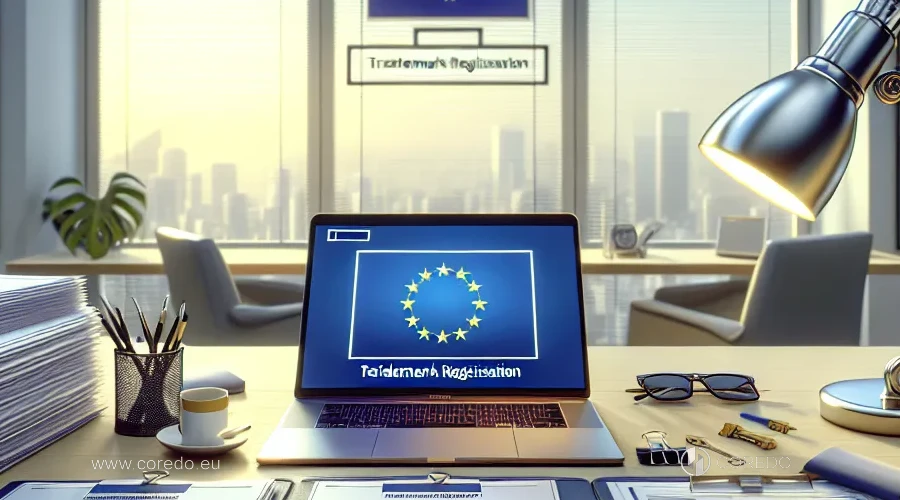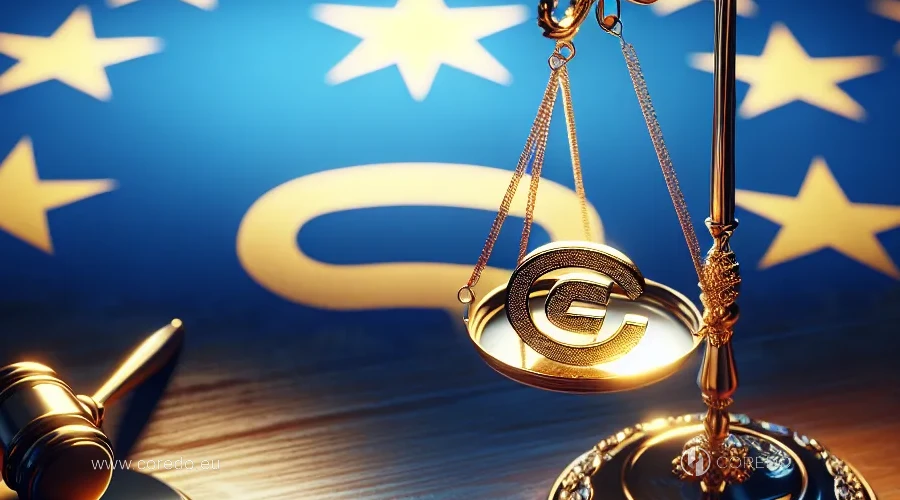Over the years, the COREDO team has often observed how timely trademark registration in the European Union becomes a key success factor for international companies, IT startups, and e-commerce projects. In the rapidly digitizing environment, cross-border competition, and tightening compliance procedures, intelligent management of intellectual assets is not just a formality but a tool for business growth and protection.
In this article, I will thoroughly discuss the most pressing issues faced by entrepreneurs from Europe, Asia, and the CIS: from choosing a registration strategy to the subtleties of legal protection and tax planning. If you want to understand how EU trademark registration can become your competitive advantage and how to avoid typical pitfalls: read on. Here you will find not only answers but also practical tools, proven by COREDO’s experience.
Trademark in the EU: what it is and why it is needed

European trademark: what is it and why?
COREDO’s practice confirms: for international holdings, IT companies, and startups aimed at scaling, the registration of a European trademark becomes the foundation of brand strategy and effective protection of intellectual assets. This approach minimizes the risks of copying, parallel imports, and unfair competition.
Registration of a trademark in the EU, advantages
- Cross-border protection: One registered EUTM provides legal protection in all 27 EU countries, significantly reducing the costs of legal support and monitoring violations.
- Simplification of entering EU markets: Centralized registration through EUIPO allows quick launching of new products and services without spending time on separate national procedures.
- Increase in brand value: According to recent WIPO research, having a registered trademark in the EU increases the company’s investment attractiveness and eases M&A transactions, franchising, and licensing.
- Flexibility for multi-product companies: Strategic reserving of Nice Classification classes allows protecting not only current but also future business directions.
Thus, EUTM registration becomes the foundation for successful brand promotion in Europe and optimization of IP asset management.
Trademark registration in the EU: step by step

How to register a trademark in the EU?
- Search and preliminary uniqueness check: Using EUIPO tools and international databases helps identify potential conflicts and minimize opposition risks. COREDO’s experience shows that quality due diligence TM at this stage reduces the likelihood of refusal by 40%.
- Choosing Nice Classification classes for the EU: Classification according to the Nice Classification of Goods and Services determines the scope of legal protection. For multi-product and IT companies, it’s crucial to strategically reserve classes considering future expansion.
- Preparation and application submission: The application is submitted through the EUIPO electronic portal, including applicant details, trademark image, list of Nice Classification classes, and supporting documents.
- Examination and publication: After a formal check, the application is published in the EUIPO bulletin. This marks the start of a three-month opposition period.
- Receiving electronic registration certificate: In the absence of opposition or successful resolution of disputes, an electronic certificate is issued, confirming legal protection in all EU countries.
How much does trademark registration cost?
- Cost of trademark registration: The basic EUIPO fee for submitting an application is 850 euros for one class, plus 50 euros for the second class and 150 euros for each subsequent class. Additional expenses may arise if legal support or filing objections are needed.
- Trademark validity period: The European trademark is valid for 10 years with the possibility of unlimited renewal for similar periods upon payment of the corresponding fees.
- Renewal of trademark in the EU: The renewal application is submitted through the EUIPO personal account no earlier than 6 months before the expiration date.
Application submission and opposition period
Grounds for refusal and trademark opposition

Absolute and relative grounds for refusal
- Absolute grounds: lack of distinctiveness, overly generic or descriptive designation, similarity to state symbols, violation of public order.
- Relative grounds: existence of previously registered trademarks with a high degree of similarity, infringement of third-party rights, overlap with Nice Classification classes.
A common mistake companies make is incorrect choice of Nice Classification classes or trying to register a designation already occupied in neighboring markets. The solution developed at COREDO includes automated checks across all relevant databases and analysis of court precedents on TM in the EU.
What to do in case of third-party objections
- Promptly analyze the grounds for objection and gather evidence of good faith use or distinctive character.
- Prepare a motivated response and, if necessary, enter negotiations with the opponent.
- In case of refusal, initiate an appeal procedure in the EUIPO Board of Appeal or take the case to the EU Court.
Trademark registration: national, European, international

When to choose a national or European trademark
| Criterion | National registration | European Trademark (EUTM) | International registration (Madrid Protocol) |
|---|---|---|---|
| Coverage | One country | All EU countries | Up to 100+ countries |
| Cost | Low | Medium | High (depends on the number of countries) |
| Review period | 6-12 months | 4-8 months | 12-18 months |
| Opposition period | 2-3 months | 3 months | 12-18 months |
| Strategic advantages | Local protection | Centralized management | Global expansion |
For companies operating in only one country, national registration is more practical. If expansion into several EU countries is planned or cross-border licensing is required, EUTM becomes the optimal choice. For multi-product companies, it’s important to strategically reserve Nice Classification classes with growth prospects in mind.
Trademark registration under the Madrid Protocol
Trademark Protection in Europe

How to protect a trademark from copying
Modern tools for monitoring trademark rights violations in the EU include automated counterfeit search systems and digital enforcement: addressing violations on e-commerce platforms and social networks. Solutions implemented by COREDO for international clients allow tracking unauthorized brand use in real-time and promptly initiating legal protection.
Franchising or license: what to choose?
Trademark protection in e-commerce and D2C
In the e-commerce and D2C segment, trademark protection becomes especially important: speed of response to violations, integration of TM into the marketing strategy, and collaboration with platforms for digital enforcement are critical. For IT companies and startups, the COREDO team recommends the implementation of automated monitoring systems and regular updating of the IP rights portfolio, considering new business directions.
Trademark Management and Taxes
Trademark valuation: due diligence and cost
Advantages of a trademark for business
Impact of rebranding on TM rights
Rebranding or business expansion requires timely updating of the trademark portfolio and making changes in EUIPO. For long-term protection, it’s important to strategically reserve new Nice Classification classes and regularly audit IP rights. COREDO solutions help minimize the risk of rights loss during brand updating and ensure continuity of legal protection.
Legal Support: what is it?
How to choose a legal partner
- Deep expertise in international intellectual property law and EU court practice.
- Experience with cross-border projects, franchising, and licensing.
- Availability of automated monitoring and compliance tools.
- Transparency in communications and readiness to accompany the client at all stages, from due diligence to legal protection.
Practical steps for business
Checklist for TM registration and protection in the EU:
- Conduct a TM uniqueness search and risk analysis.
- Determine strategy and choose Nice Classification classes.
- Prepare and submit an application through EUIPO.
- Monitor publication and opposition period.
- Obtain the electronic registration certificate.
- Set up automated monitoring of violations.
- Develop a tax strategy considering TM ownership.
- Regularly audit and update the IP rights portfolio.
Common mistakes to avoid:
- Ignoring preliminary search and due diligence.
- Incorrect choice of Nice Classification classes.
- Untimely renewal or updating of rights.
- Lack of a system for monitoring violations and digital enforcement.
Key conclusions and practical advice
- European trademark – is not only a legal protection tool but also a strategic asset influencing brand value, investment attractiveness, and scaling opportunities.
- A comprehensive approach to TM registration, monitoring, and portfolio management minimizes legal and reputational risks.
- For startups, IT companies, and international holdings, registering a trademark in the EU becomes a mandatory element of the strategy for entering new markets and protecting intellectual assets.
- COREDO’s practice proves: competent legal support, compliance automation, and integration of TM into the marketing strategy are key factors for long-term success.